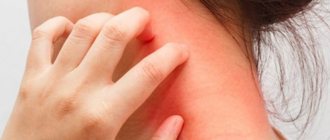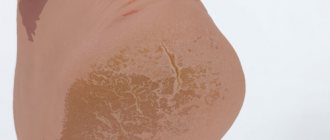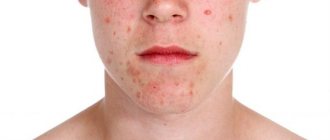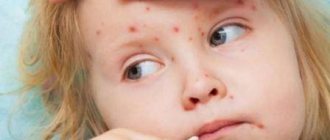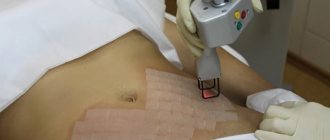What do white spots on nails mean?
08.08.2018
Many people have at least once noticed white spots or stripes on their nails - these are leukonychia. This cosmetic problem is quite unpleasant, since it becomes necessary to hide stains under bright varnishes, and their frequent use makes the nail plate thinner due to lack of oxygen. White spots appear because air bubbles get stuck between the keratin plates that make up the nail. Typically, several of these white spots appear on one nail at once, although they can form stripes and cover the nail completely. In the latter case, the situation needs to be corrected with the help of a doctor , as well as in a situation where leukonychia increases in size or is located on several nails at once.
Causes of leukonychia
- Mechanical damage . Impact, careless handling of the file, uncomfortable shoes, strong squeezing of the nails - all this causes the appearance of white spots. In this situation, a doctor's consultation is not necessary, as these white spots are similar to a bruise on the skin. You can deal with them using strengthening varnishes.
- Chemical exposure . Applying low-quality nail polish, washing off the decorative coating with an aggressive composition, detergents and cleaning mixtures can also cause the appearance of leukonychia. This situation can be prevented by using gloves, which should not be forgotten when cleaning and washing dishes. If you are sure that the white spots are caused by a chemical, you can treat them with a salt bath for 15-20 minutes.
- Fungus . If, in addition to leukonychia, the nails turn yellow, peel, crumble, thicken or are otherwise deformed, then most likely they are infected with a fungus. a dermatologist can solve this problem with special antifungal agents or laser procedures.
- Lack of protein in the body . This situation can be recognized if the leukonychia accumulate in white stripes. They solve the problem by eating protein foods: meat, fish, eggs, seafood, legumes.
- Kidney diseases . You can suspect this problem if leukonychia appears on many nails at once, and also if they are concentrated near the nail bed. A therapist or nephrologist will help kidney disease .
- Stress . A neuropathological cause is indicated by large white spots in the center of the nail. A neurologist treat stress , but even without consulting a doctor , rest, soothing decoctions, quality sleep, proper nutrition, walks in the fresh air, and exercise will be useful.
- Metabolic disorders and pregnancy . In this case, no special treatment is required; additional strengthening of the nails with special varnishes and baths is sufficient.
- Reduced hemoglobin in the blood . A general practitioner will help confirm that the white spots are caused by this problem after a blood . Increase hemoglobin with the help of medications and consumption of foods rich in iron (apricot, liver , red meat, pomegranate, mushrooms, rose hips, tomatoes, citrus fruits).
- Lack of vitamins and microelements (vitamins A, B, C, E, iodine, zinc, calcium). This is the case if there is little leukonychia and there are other symptoms of vitamin deficiency: dry skin, brittle hair, fatigue. The problem can be solved by taking vitamin complexes and diversifying your diet: eat more cereals, nuts, legumes, dairy products, seafood, fresh vegetables and fruits, seaweed, replace sunflower oil with olive or flaxseed oil, give up fast food. If the white spots do not go away, you should consult a doctor .
If leukonychia often appears on the nails, then it would be useful to visit a doctor (first you need to visit a dermatologist’s ), since they can indicate many internal problems. If you avoid stress, mechanical and chemical damage, eat right and protect your nails from fungus, this problem is unlikely to ever arise.
Published in Dermatology Premium Clinic
How to collect material for analysis
- A week before the start of the study, you should not use creams or other care products. During this period, you should not cover your nails with varnish, including medicinal ones.
- Before collecting biomaterial, hands should be washed thoroughly, rinsed off with detergent and completely dried. You cannot use a nail file! The scissors or blade must be disinfected.
- If a test is needed to identify a fungus, a sample is taken from the most affected areas. If ME analysis is required, samples from all fingers will be needed. More details will be provided in the laboratory.
- The cut parts of the nail plate are placed in a sterile test tube or a special envelope. The containers are signed.
How the treatment works, methods
The main treatments for melanoma under the nail include:
- resection at the level of the middle phalanx of the finger. The formation is removed in such a way as to preserve the patient’s quality of life as much as possible;
- radiation therapy. It is carried out to exclude tumor recurrence in the area of surgical scars, as well as to influence the primary lymph nodes to prevent the development of metastases;
- chemotherapy. Depending on the situation, it can be used before surgery and after surgery. There are different program options that are selected individually;
- immunotherapy. The use of certain drugs prolongs the period without recurrence and increases the overall survival of patients with this type of cancer.
It is assumed that gene therapy can also play a positive role in treatment.
Other problems
Nails change color not only due to fungal infection. The cause may be injury and lack of vitamins. This also happens when internal organs malfunction and due to diseases:
- Brittle nails are a sign of zinc and iron deficiency. Fragility can also indicate thyroid problems and a predisposition to diabetes. But it is possible that excessive fragility is your physiological feature.
- White spots and stripes are the consequences of microtraumas or a signal that you need to adjust your diet, check for heart failure or nervous exhaustion.
- Small depressions that strew the plate indicate psoriasis or arthritis.
- Deformations of the nail plate and grooves indicate that you are not eating well enough. These are common consequences of strict diets.
- Spoon-shaped, curved nails indicate problems with the endocrine system and a lack of iron.
- Nails are white at the base and almost brown at the tips - a symptom of kidney failure.
Disease prevention
Prevention of subungual melanoma can include:
- protection of fingernails and toenails from physical and chemical injuries, exposure to aggressive chemicals;
- additional examinations of those people who have had cases of melanoma among their close relatives;
- monitoring existing benign neoplasms (nevi) and their timely removal.
Also, do not ignore the primary signs of melanoma of the nail plate. In many cases, they talk about other, simpler symptoms or diseases, but you shouldn’t count on it.
Types and symptoms
The classification of nail melanoma provides for two variants of the course of the disease: horizontal and vertical stages. Symptoms of the disease will depend on what type we are talking about.
In the horizontal stage, the patient observes a brown or black stripe on the nail (under the plate). The strip is not necessarily uniform; it can expand, capture more of the free nail edge, and transfer to the skin.
During the vertical stage, the tumor begins to grow into the surrounding tissues, deformation of the nail occurs, and it becomes fragile. As the tumor grows, the nail cracks, the surface becomes covered with bumps, and at the slightest mechanical impact it begins to bleed. The pigment in this case can also be either brown or black.
It is important to understand that nail melanoma can be non-pigmented until a serious stage. For this reason, until the tumor begins to spread vertically, it may not be noticed. This is typical for approximately 30% of cases.
Not always, but the disease can also manifest itself with the following symptoms:
- burning, itching in the area of the tumor;
- feeling of fullness;
- pain that increases as the tumor develops;
- decreased functionality of the limb.
Common symptoms on the toenail or fingernail include fever, weakness, and severe weight loss. With the development of metastases, local symptoms are added - those that are characteristic of diseases of the affected organs.
Are you experiencing symptoms of nail melanoma?
Only a doctor can accurately diagnose the disease. Don't delay your consultation - call
Stages of the disease
The classification of nail melanoma involves (like any other cancer) several stages:
- zero (in situ). At this stage, non-invasive damage by malignant cells is detected;
- first. The thickness of the formation is either up to 1 millimeter or up to 2, but without ulceration;
- second. It is placed if the thickness of the tumor is no more than 2 millimeters or no more than 4, but without ulceration;
- third. It is placed regardless of the size of the melanoma itself, provided that metastases are detected in the regional lymph nodes;
- fourth. Suggests the presence of metastases in internal organs.
Obviously, the lower the stage, the higher the patient’s chances of effective treatment and longer life expectancy.
Complications and prognosis
With the development of nail melanoma, the risk of metastases is very high. As a rule, they appear in the liver and lungs. However, resection does not protect 100% from these processes.
Another difficulty is that surgery always (but to varying degrees) reduces the functionality of the limb. Patients also experience psychological difficulties, since their lifestyle changes, and in the case of hand operations, difficulties arise with the perception of their new appearance, which is difficult to hide from others.
In the absence of metastases, the five-year survival rate of patients is about 60%, but if metastases are already present, the average survival rate ranges from 7-8 months. The specific timing depends on individual characteristics, as well as the size, thickness of the tumor and other factors.
Diagnostics
Diagnosing melanoma under the nail is not so easy, because it is often similar to other diseases or problems, for example, subungual hematomas. To exclude simpler situations and make an accurate diagnosis, doctors use dermatoscopy (examination of tissue under high magnification), as well as epiluminescence microscopy. The latter method involves examining changed areas of tissue in a special environment. Thanks to it, it is possible to distinguish a benign disease from a malignant one.
Cytological studies are carried out, but a biopsy in this case is undesirable, since it can provoke the development of metastases. Additional tissue examination is carried out after surgery, when the tissues are removed.
If nail melanoma is not excluded after examination, marginal resection of the nail is performed followed by tissue examination. When the diagnosis is confirmed, the patient is indicated for radical surgery.
Additionally, the following research methods are used:
- Ultrasound;
- CT;
- MRI.
They are needed to verify the presence or absence of metastases.
Which doctor should I contact?
At the first alarming symptoms: the formation of white stripes and spots on the nails, it is recommended to consult a dermatologist. In the future, concomitant consultation with a trichologist, infectious disease specialist, cardiologist, endocrinologist, gynecologist, nutritionist, and dietician may be required. In some situations, complex treatment with the help of doctors of several specialties is required. To achieve the best therapeutic result, you must adhere to the recommendations of specialists and refrain from self-medication.
Choose a specialist, read reviews and make an appointment with a dermatologist online




